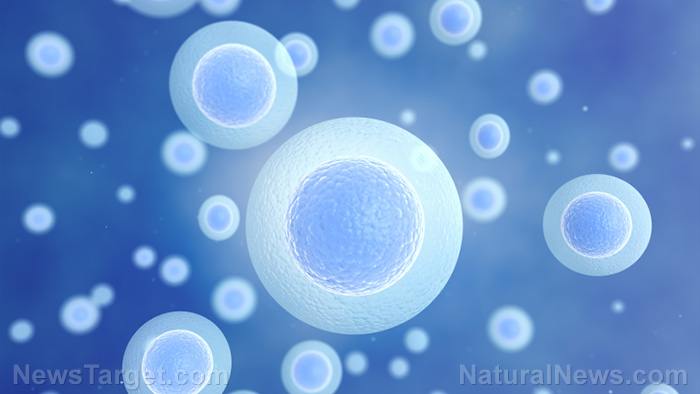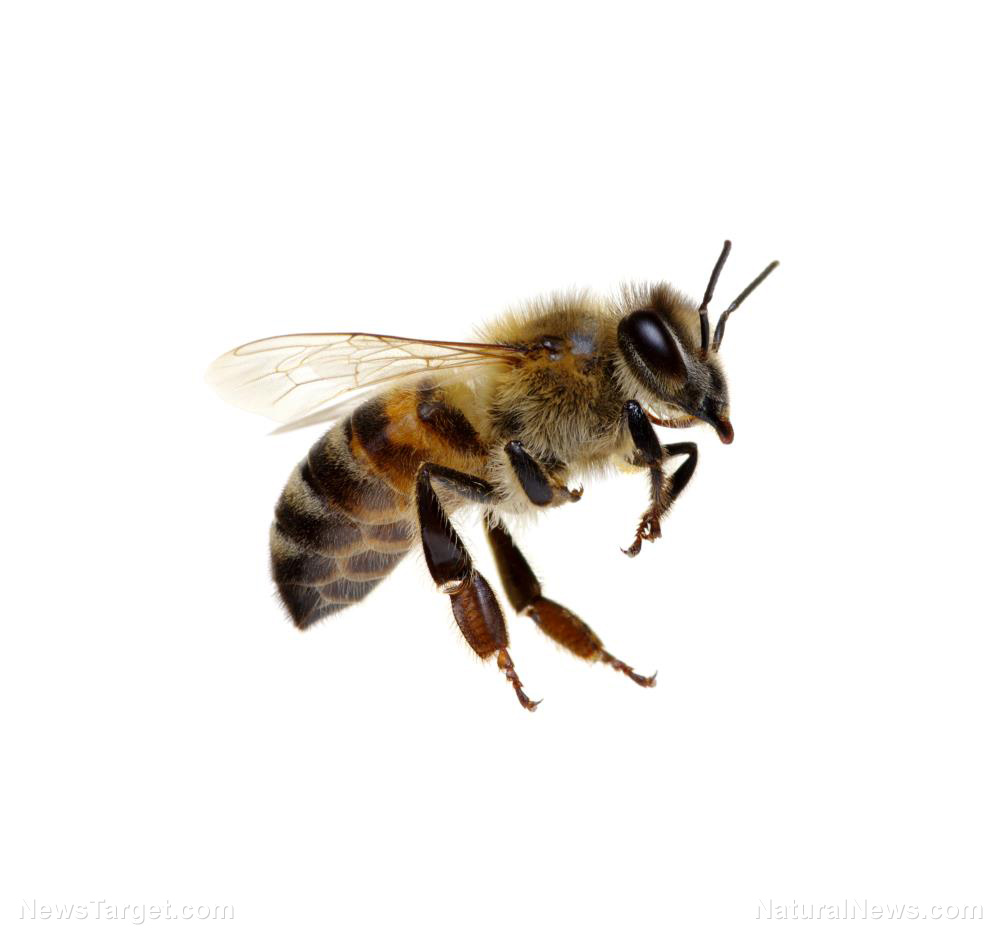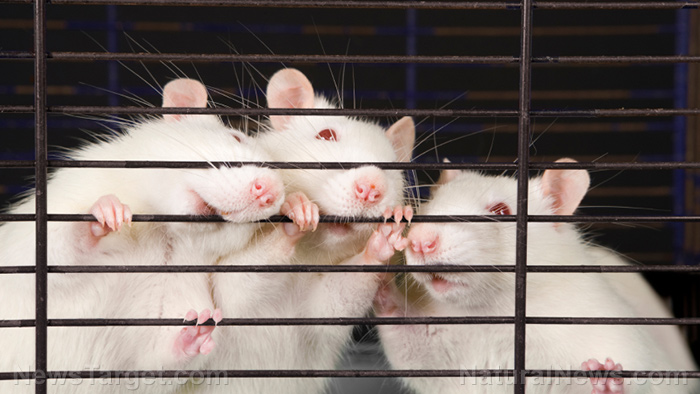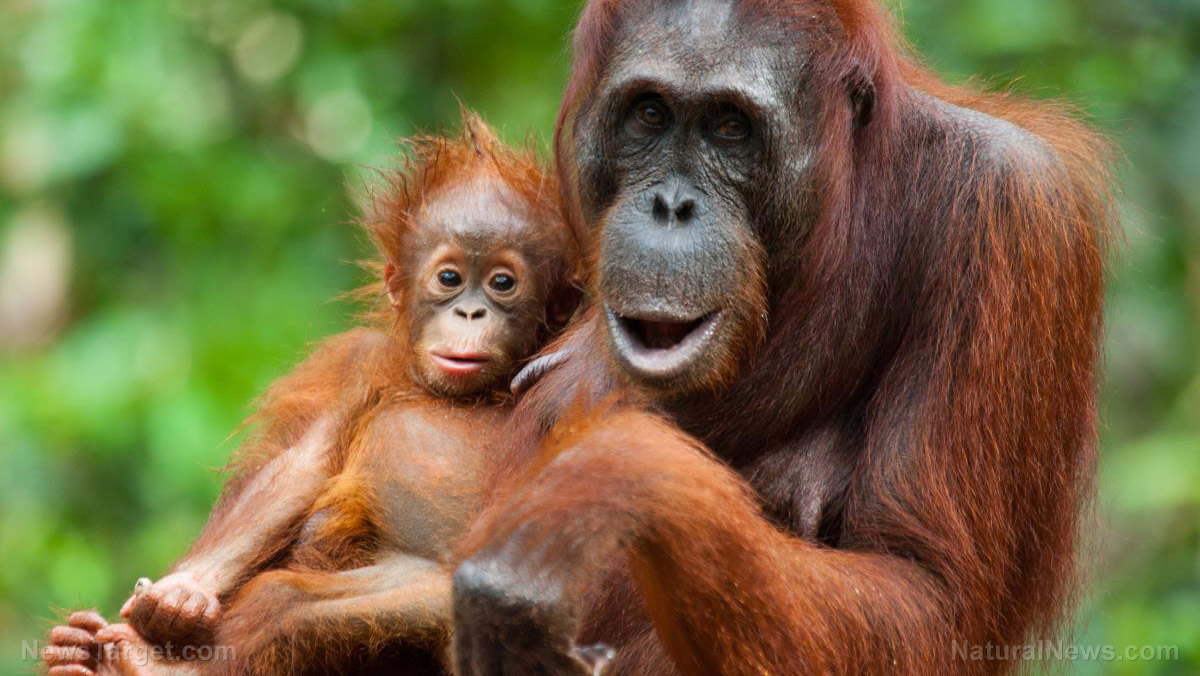Baby foreskin being used to make vaccines
09/30/2017 / By News Editors

Warning: Some people may find the information in this article disturbing and the images graphic.
Every year, some infants are circumcised. During this surgical procedure, part of the child’s protective penile tissue is removed. This tissue removed from his penis may be sold to companies and institutions seeking the rich human fibroblast cells and other cells it contains. Most people are unaware that for decades, vaccine companies have been using these foreskin cells to research, grow and develop vaccines.
(Article by Augustina Ursino republished from VacTruth.com)
Certain microorganisms used by vaccine companies need living human cells to replicate. The cells within foreskin are being used for this purpose. Foreskin cells can be used to turn a wild-type microorganism found in nature into a genetically modified microorganism for use in vaccines.
Baby foreskins are used to research rubella, varicella and human papillomavirus (HPV) vaccines. They are used to make cytomegalovirus vaccines, which is something pharmaceutical companies have been working on the last few decades. This vaccine is being created using foreskin cells and clinical trials have already begun. The child’s DNA whose foreskin was used to make the vaccine cannot be fully removed from the vaccines prior to administration. Researchers are also using foreskin to create a human telomerase reverse transcriptase (hTERT) immortalized cell line for use in vaccines.
Cells isolated from infant foreskin are preferred because the infant cells have a longer lifespan than those isolated from adult foreskin. The ongoing issue with companies using infant foreskin to develop vaccines and other products is vast; only a small fraction can be discussed here. It is important to research how vaccines are made prior to receiving them, if you want to avoid unwanted contaminants in your body.
Hospitals and Clinics Can Sell Foreskin Removed from Newborns
What we call foreskin is actually part of a whole skin system in both males and females. During the male circumcision procedure, twenty to fifty percent of the skin that protects the baby’s penis is surgically removed, with or without pain medicine. There are occasions where surgical accidents happen and more is removed.
If a hospital or clinic obtained consent to use the foreskin for purposes they felt were desired, the removed foreskin may then be sold at that point, even if the baby didn’t survive.
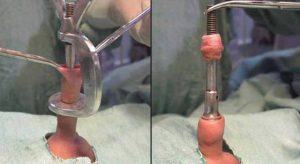
Foreskin is being removed during a circumcision procedure.
Surgically removing the foreskin kills at least one baby boy in the United States every two days. Before being circumcised, these infants are already trying to rid their body of the toxic chemicals injected from the synthetic vitamin K shot and hepatitis B vaccine given soon after birth. These circumcision deaths usually occur from an infection that arises, trauma experienced, blood loss, or their tiny lungs burst from intense crying. This is a conservative estimate since circumcision deaths are usually not reported in the United States or elsewhere. [1,2]
Each hospital or clinic determines what can happen to the excised piece of skin. It may be discarded as biological waste, sent home with the parents who want to save it, or it may become the property of the hospital or clinic to further use for what they deem necessary, if a consent form was signed agreeing to this.
How Foreskin Cells Are Being Isolated
After the baby was circumcised, if the goal is to sell the foreskin for profit, it can be preserved and legally sold. Foreskin can also be donated.
Once the foreskin has been obtained by researchers in a lab, it is further processed. The foreskin is laid in a dish and then cut into strips. It is then soaked in an enzymatic solution to help the tissue layers separate. When ready, each strip of foreskin is peeled apart to separate the epidermal top layer from the dermal layer below that. The two layers are put in separate dishes. This is done to isolate specific cells within each layer.
The top epidermal layer of the foreskin contains cells that produce keratin, called keratinocytes. The dermis layer below contains fibroblast cells. It is these keratinocytes and fibroblast cells that are used to research, grow and develop vaccine strains.
A step by step list of this procedure is explained on the Thermo Fisher Scientific web page, titled Isolation, Primary Culture, and Cryopreservation of Human Neonatal Fibroblasts. [3]
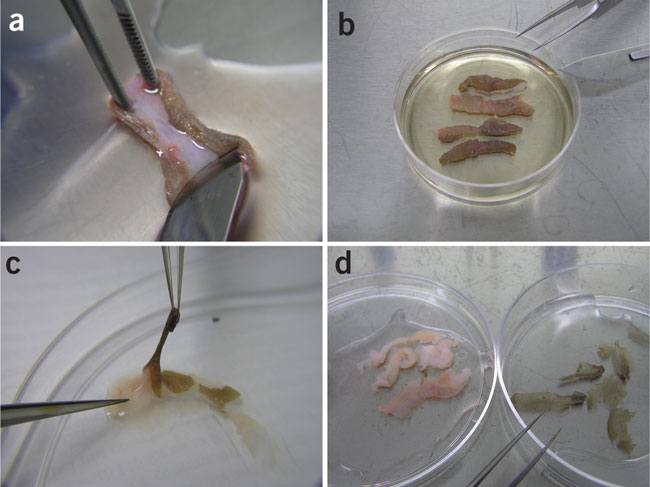
From the publication:
“Isolation and cultivation of human keratinocytes from skin or plucked hair for the generation of induced pluripotent stem cells
Figure 2: Enzymatic isolation of the epidermis and the dermis.(a) Foreskin or other skin sample is placed epidermal side down (in this case, dark pigmented epidermis) and loose connective tissue is scraped away using a scalpel. (b) The tissue is cut into smaller pieces of 4–5 mm width and placed in dispase solution overnight at 4 °C. (c) The next day, the epidermis is peeled off and placed in a second dish in the medium. (d) The end result is one dish with the dermis that can be used for fibroblast isolation and the other dish with the epidermis that can be used for keratinocyte isolation.” [4]
There are other methods to get the foreskin to separate. [5]
Read more at VacTruth.com
Tagged Under: circumcision, evil, foreskin, harmful medicine, mutilation, vaccine, vaccine ingredients, vaccine truth, vaccines









